Dr. Douglas Tallamy, The New York Time’s bestselling author of Nature’s Best Hope—a practical guide to battling the biodiversity crisis in your own backyard—is back with another book. This time, he’s diving even deeper into how people can make a difference.
In drawing upon the lingering questions that legions of people still had after delving into his work, Tallamy is releasing How Can I Help. His latest book is out April, 8 2025.
How Can I Help began by Tallamy simply responding via email to readers’ questions. Realizing how prolific they were, and that there was genuine interest out there for more information, he began gathering this information into a book.
KINUTE recently caught up with the renowned entomologist to chat about his forthcoming book, how people really can help, and a documentary that’s on the horizon.

How would you describe the evolution of your relationship with the natural world?
I was born loving it. So I immediately had a relationship, especially with animals. I didn't know anything about plants, and I didn't care about plants, but I liked turtles and I liked snakes. I liked living things. So, I don't take any credit for that. I was just born that way, which means I gravitated towards educational avenues that were in those areas. And the more you learn, the more you can appreciate it. I didn't discover insects until college. I took a course in entomology, and I thought they were the neatest of all. So I made that my career.
How did you first become interested in the relationship between insects and native plants?
Well, one of the things you learn in graduate school is called plant-insect interactions. Insects are the most numerous things on the planet, and plants are the second most numerous, and how they interact with each other determines everything. It determines how well ecosystems function. It determines diversity. The main thing we focused on for more than a year is how insects get around plant defenses so that they can eat them, and that leads to host plant specialization, which means our the insects in North America specialize on North American plants, not on plants from other continents, which means native plants are essential to keeping our ecosystems together, keeping that diversity out there.
And then bits of information kept coming in. In 1987, E.O. Wilson wrote a paper about insects being the little things that run the world. Well, if they're the little things that run the world and we load the world with non-native plants that they can't eat, you lose your insects and you start to get ecosystem collapse. Then of course, we got plenty of data of ecosystem collapse, all the biodiversity loss–we’ve lost 3,000,000,000 breeding birds from North America [since the 1970s], global insect decline, amphibians. Everything's in trouble out there.
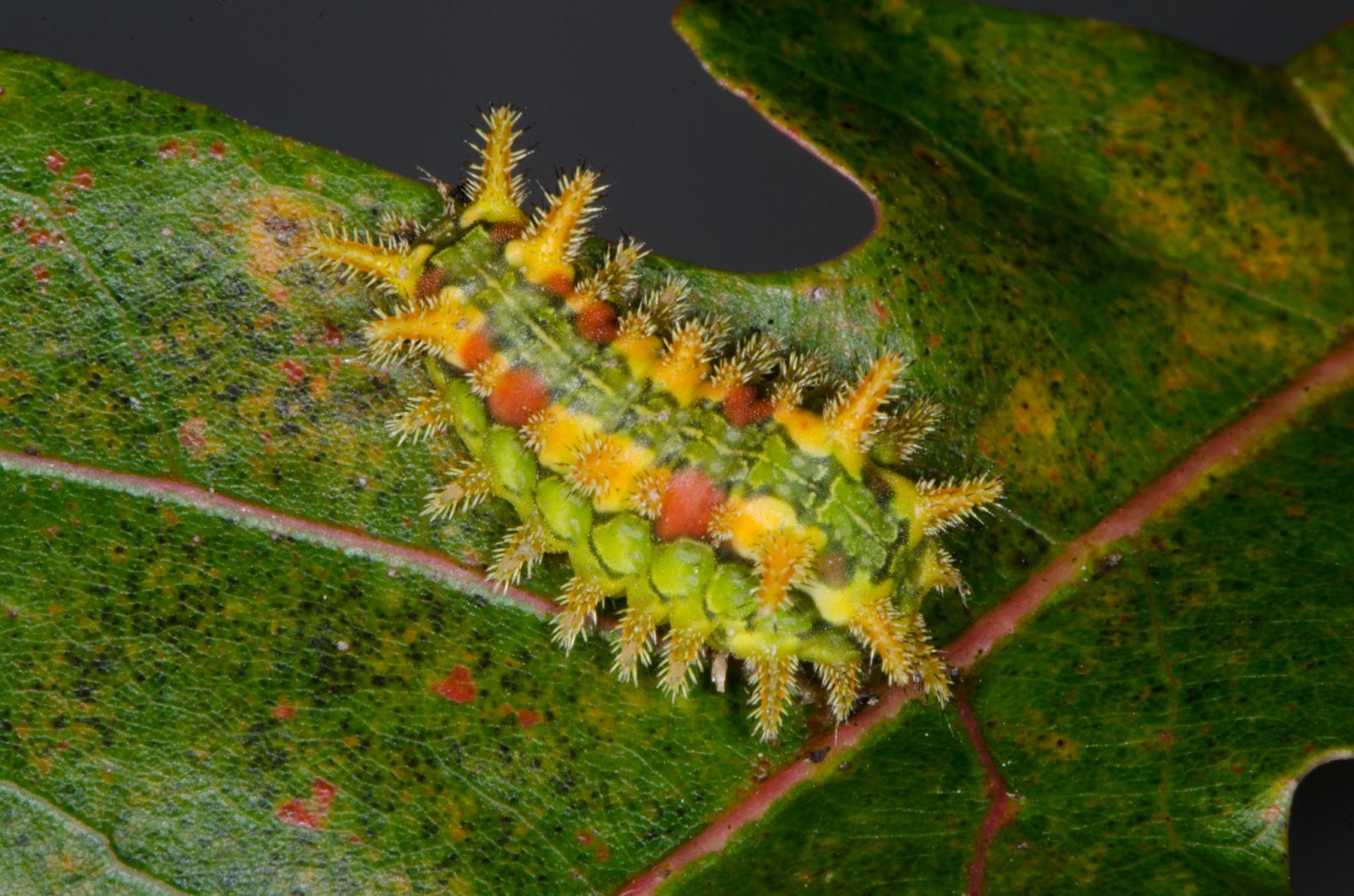
Spiny oak slug. (Photo courtesy of Doug Tallamy)
So many people have an aversion to bugs, what do you say to assuage their concerns when you are encouraging them to incorporate these native plants that are going to encourage an increased insect population on their property?
First I point out that bugs are diseases that make us sick, or they're something that infects our computers. The terminology we use sets the tone right away about whether it's something positive or not, and it's simply education.
A lot of people don't like insects, but they do like birds, and when I point out that 96% of our terrestrial birds rear their young on insects, all of a sudden insects become bird food. You're not going to have birds if you don't have bird food, and then all of a sudden, they're not so bad. If you want birds in your yard, you've got to have bird food in your yard. What is making that food? It's the native plants. So these types of connections help to soften some of the negative feelings that we have.
Most of our negative feelings against insects come from our parents and from the media. All we hear about is mosquitoes or cockroaches or the things that are actually not very important in terms of running the ecosystem. If your mother screams when you're two years old, when she sees a fly or something, you remember that—that's a life changing experience—but we can overcome that with education, and that's what I'm all about.
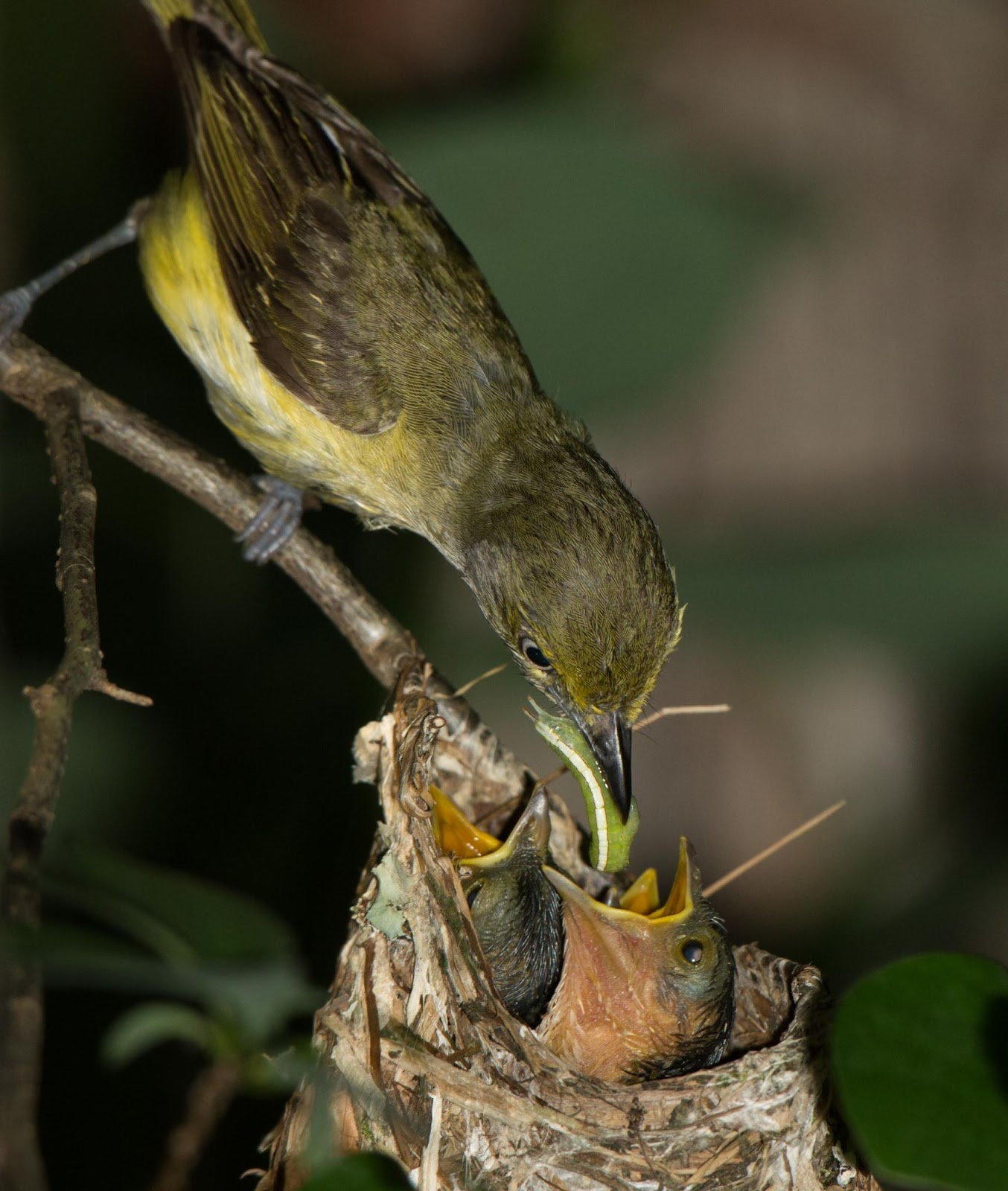
White eyed vireo feeding insects to its young. (Photo courtesy of Doug Tallamy)
How would you say your forthcoming book, How Can I Help, is different from some of your previous books on native plants and insects?
It is the next step. It is the answers to 499 questions that I have gotten by email. Actually, it was a lot more than that, but they made me cut it down. And these are questions from people who have already heard my talks, they've already read my other books, and they're still really good questions. They want to know more. It's a deeper understanding. I was writing all these answers on email and I said, I might as well put it together in a book.
Your call to action is primarily directed at homeowners. What do you think will help sway commercial and institutional properties to also play a role in creating critical habitat?
Public opinion. The demand for native plants right now exceeds the supply. That's a business opportunity. When people go to the nursery and they don't have to ask especially for the native plant in the corner, when it's the dominant thing for sale, that's what they'll buy.
A lot of questions I get revolve around, “how do we reach public officials? How do I reach my township? How do I get them to stop spraying for mosquitoes, which kills all the pollinators and the monarch and everything else?” These are elected officials. We have to make it known that these are important issues to us, and we will not vote for you if you don't take them seriously. Any politician will take something seriously if they think they're going to lose their job if they don't. It really comes from this grassroots pressure about how we treat our landscapes, and I do see it starting to happen.

Native planting in Washington Park; Denver, Colorado. (Photo: Homegrown National Park Facebook)
Out of the 499 questions that you address in How Can I Help, what are a few of the most important ones you address?
You know, in terms of what's really going to make a difference here, is changing people's perception about the natural world. We've had this adversarial relationship with it. We need to have a collaborative relationship with it.
Actually, one question I've gotten is, you know, what my religious views are. So, I talk about how beneficial the religious views of indigenous groups all over the world were because they were definitely in sync with the natural world. In other words, rather than worshiping a god, worshiping nature. And that gets tricky, but I did address that. I really do think if we don't worship it, we have to respect it. It really does have to become the most important thing about the way we interact with this planet.
I think mosquito fogging—that's a booming business around the country—and it's undoing everything else that we do. It kills all the insects it comes in contact with, and it does not control mosquitoes. It's ridiculous that we do this. It would be a huge if we were to end that tomorrow, that'd be a huge plus.
Light pollution at night is a major cause of insect decline, not just in this country, but throughout the temperate zone. Nobody's measured it in the tropics, but it's happening there too. It's such a major problem with a very, very simple solution. Either turn your light out, or put a yellow bulb in, or put a motion sensor on your light. So things like that can make a huge difference.
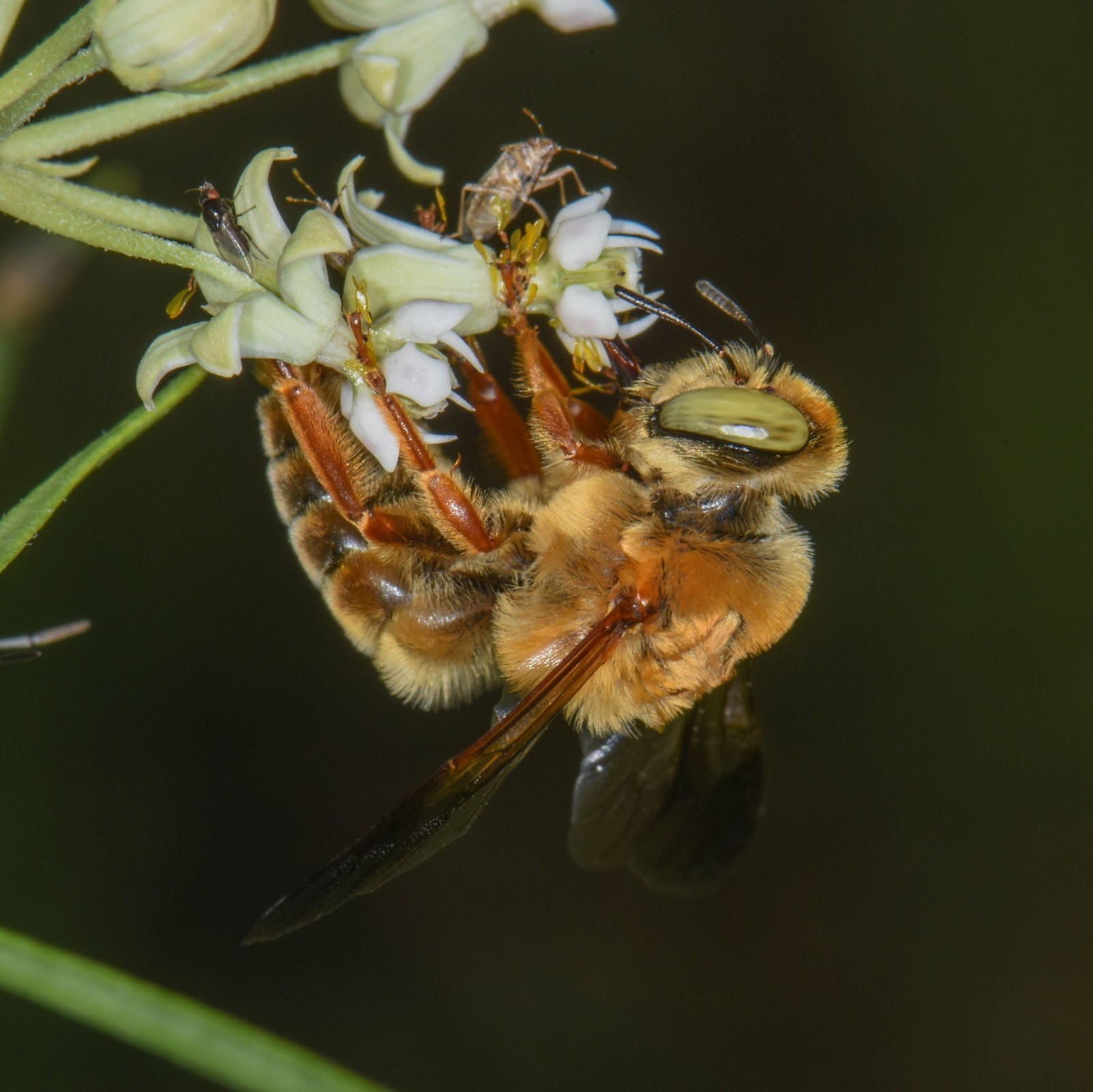
Foraging native bee. (Photo courtesy of Doug Tallamy)
In regard to mosquito fogging, do you have an alternative that people can use to discourage mosquitoes without damaging other insects?
Yes, and it's not mine. It's called mosquito dunks. It is a natural bacterium that only kills mosquito larvae.
It's not that I'm against controlling mosquitoes, because most of them are introduced—they're invasive species themselves, like Aedes aegypti and the Asian tiger mosquito. They're the most annoying. They transfer the most diseases, and we can control them in the larval stage in a very directed way where the only thing you're killing is mosquito larva.
You do this in buckets that you create in your yard. You put in some organic matter—straw, hair, leaves—that builds up the population of diatoms and algae that mosquito larvae eat. The female mosquitos lay their eggs in your bucket, then you put in a mosquito dunk, which you can buy at the hardware store—you can get a season's worth of control for $12—and you put it in your bucket, and the only thing it kills is mosquito larva. So it's very targeted, and if everybody did it, it really would work well.
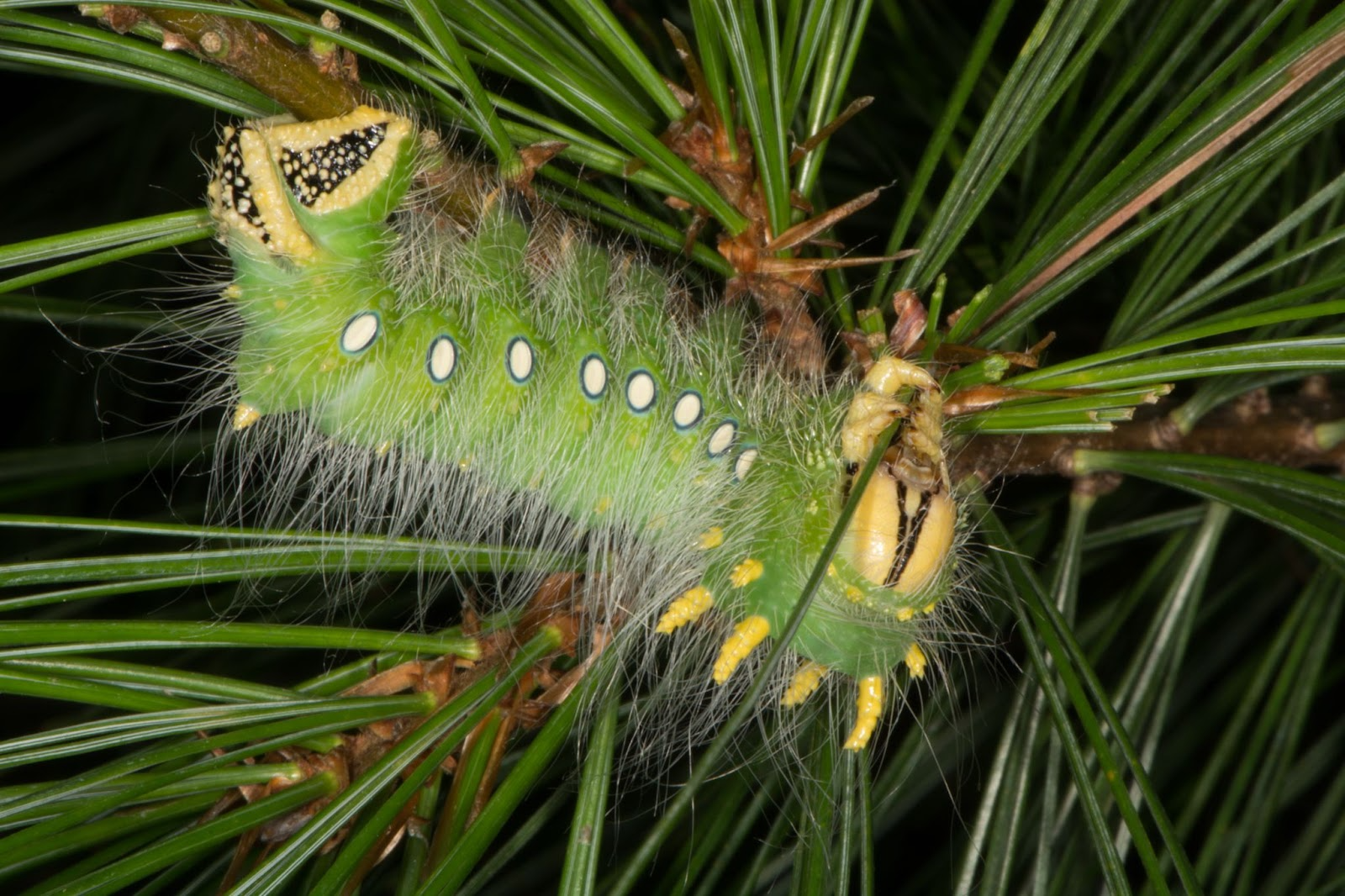
Imperial moth caterpillar. (Photo courtesy of Doug Tallamy)
You also have a documentary in the works, can you talk about that?
It's two parts. It's about caterpillars—because they're the most important group of insects that are running the food web. They're providing the energy for the food web. They're transferring more energy from plants to other animals than any other type of insects. So, we'll just call it the most important bird food out there, and they're fascinating.
It's a group in Canada [who’s making it, but] they want to market it globally. The first part is being released within 2025.
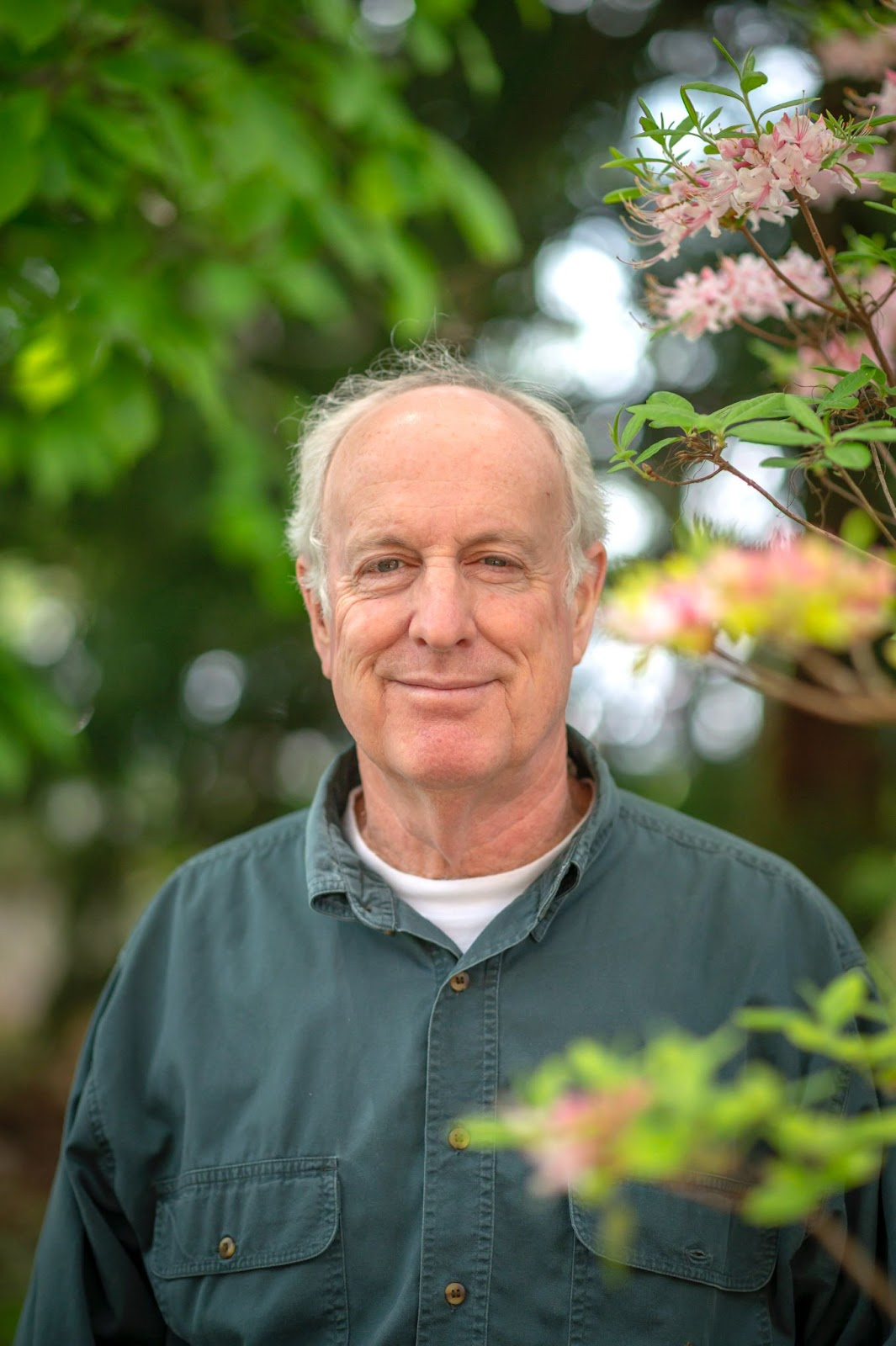
Dr. Douglas Tallamy. (Photo provided)
